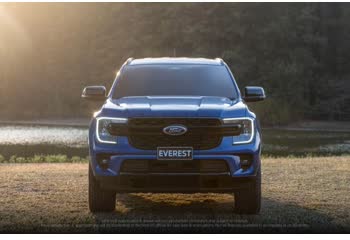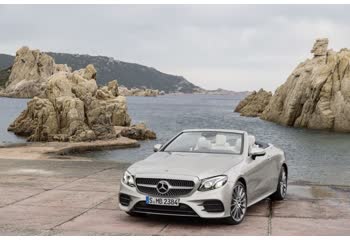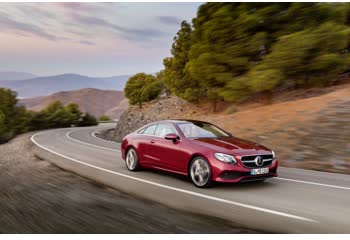Everything you need to know about specifications and performance - Ford Everest 2018 - 2.0 (214 Hp) Automatic

Overview:
What is the engine capacity of a Ford Everest 2018?
The engine capacity of the Ford Everest 2018 is 1996.
Ford Everest 2018 How many horsepower?
The engine power of the Ford Everest 2018 is 214 Hp @ 3750 rpm..
How much gasoline does a Ford Everest 2018 consume?
The Ford Everest 2018 consumes 6.9 liters of gasoline per 100 km
General:
Brand: Ford
Model: Everest
Generation: Everest II (U375/UA, facelift 2018)
Modification (Engine): 2.0 (214 Hp) Automatic
Start of production: May, 2018
End of production: September, 2022
Powertrain Architecture: Internal Combustion Engine
Body type:Sports Utility Vehicle (SUV)
Seats: 5-7
Doors: 5
Engine:
Power: 214 hp @ 3750 rpm.
Power per litre: 107.2 hp/l
Torque: 500 nm @ 1750-2000 rpm.
Engine displacement: 1996
Number of cylinders: 4
Engine configuration: Inline
Number of valves per cylinder: 4
Fuel injection system: Diesel Commonrail
Engine aspiration: BiTurbo, Intercooler
Engine oil capacity: 7.1 l
Coolant: 11.2 l
Cylinder Bore: 84.01 mm
Piston Stroke: 90 mm
Performance:
Fuel Type: Diesel
Fuel consumption (economy) - combined: 6.9 l/100 km
Weight-to-power ratio: 10.8 kg/Hp, 92.6 Hp/tonne
Weight-to-torque ratio: 4.6 kg/Nm, 216.3 Nm/tonne
Space:
Kerb Weight (kg): 2312
Max. weight (kg): 2950
Max load (kg): 638
Trunk (boot) space - maximum: 2010 l
Trunk (boot) space - minimum: 450 l
Permitted trailer load with brakes (12%): 3100 kg
Fuel tank capacity: 80 l
dimensions:
Ramp-over (brakeover) angle: 21.5°
Wading depth: 800 mm
Length: 4903 mm
Width: 1869 mm
Height: 1837 mm
wheelbase: 2850 mm
Width including mirrors: 2180 mm
Front track: 1560 mm
Rear (Back) track: 1564 mm
Front overhang: 916 mm
Rear overhang: 1137 mm
Ride height (ground clearance): 227 mm
Minimum turning circle (turning diameter): 11.7 m
Approach angle: 29.5°
Departure angle: 25°
Powertrain, Suspension and Brakes:
Drivetrain Architecture: The Internal combustion Engine (ICE) drives the rear wheels of the vehicle.
Drive wheel: Rear wheel drive
Number of gears and type of gearbox: 10 gears, automatic transmission
Front brakes: Ventilated discs
Rear brakes: Disc
Assisting systems: ABS (Anti-lock braking system)
Steering type: Steering rack and pinion
Power steering: Electric Steering
Front suspension: Independent coil Spring
Rear suspension: dependent Spring suspension
See also

Last generation.
Its production began in 2022 until Now

Same production year and almost the same engine capacity.
Its production began in 2018 until 2020

Same production year and almost the same engine capacity.
Its production began in 2018 until 2020
Write a comment